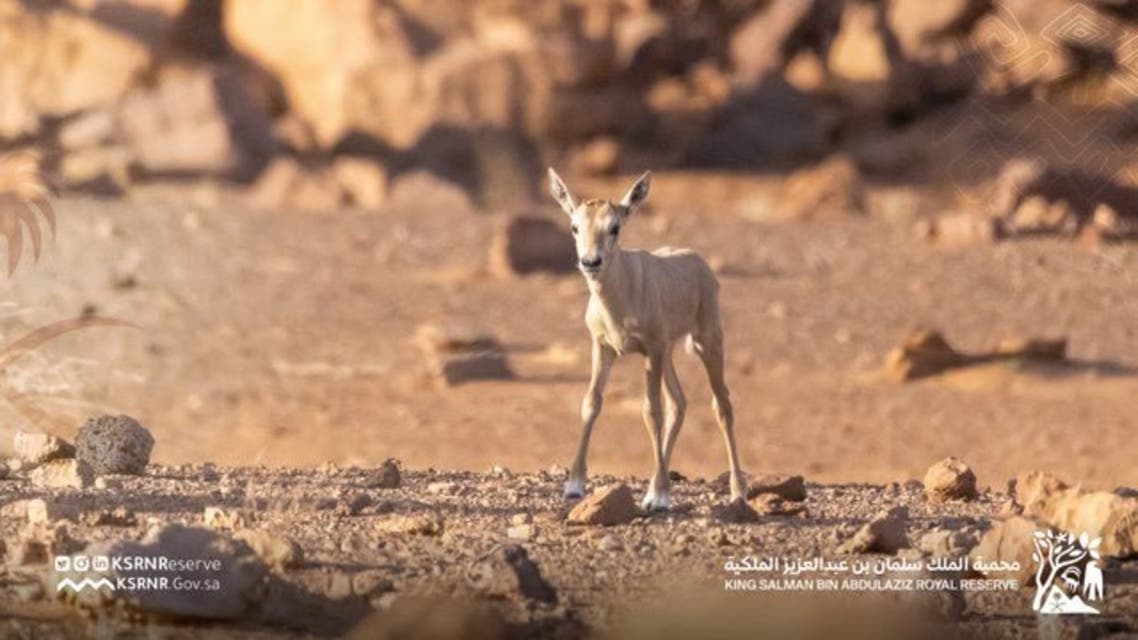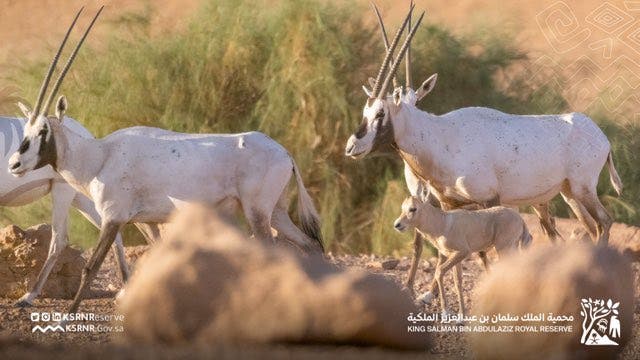THE ORYX WAS ONCE A CRYPTID
In pictures: Birth of first Arabian Oryx to be born in Saudi Arabia in 90 years
The calf was born at Saudi Arabia’s King Salman Royal Reserve. (Supplied: King Salman Royal Reserve)
Jennifer Bell, Al Arabiya English
Published: 11 June ,2022
New pictures released by Saudi Arabia’s King Salman Royal Reserve have documented the birth of the first Arabian oryx to be born in the Kingdom in 90 years.
The calf was born at the reserve which is located in the Northern Borders province and is the largest natural reserve in the Middle East, covering 130,700 square kilometers.
The historic moment was shared by authorities on Twitter, who announced the “interrupted labor of the Arabian Oryx species that lasted 90 years.”
The pictures show the calf released back into the wild under the Kingdom's programs to reintroduce endangered species back into their natural habitat.

The oryx has been released back into the wild under Saudi’s initiative to reintroduce endangered species back into their natural habitat. New pictures released by Saudi Arabia’s King Salman Royal Reserve have documented the birth of the first Arabian oryx be to be born in the Kingdom in 90 years. (Supplied: King Salman Royal Reserve)
The Arabian oryx is one of Saudi Arabia's endangered species currently benefiting from preservation efforts.
In 1972, the species was declared extinct in the wild having witnessed a significant drop in numbers due to loss of habitat and poaching. The Kingdom's goal is to reintroduce endangered species into the wild in order to preserve its natural heritage and biodiversity.
As part of conservation efforts, this includes preserving the natural habitats of respective species, while designating protected areas such as King Salman Royal Reserve.
The oryx has been released back into the wild under Saudi’s initiative to reintroduce endangered species back into their natural habitat. New pictures released by Saudi Arabia’s King Salman Royal Reserve have documented the birth of the first Arabian oryx be to be born in the Kingdom in 90 years. (Supplied: King Salman Royal Reserve)
Earlier this year, the Royal Commission for AlUla (RCU) released 20 Arabian oryx, 50 sand gazelles and 10 Nubian ibex into their native habitat in the nature reserves of northwestern Saudi Arabia to mark World Wildlife Day.
The animals came from the King Khaled Wildlife Research Center, which operates north of Riyadh as a branch of the National Center for Wildlife. After a period of adjustment to these new environs, the animals will be released into the Sharaan reserve; designed to protect indigenous animal species and conserve biodiversity.
No comments:
Post a Comment